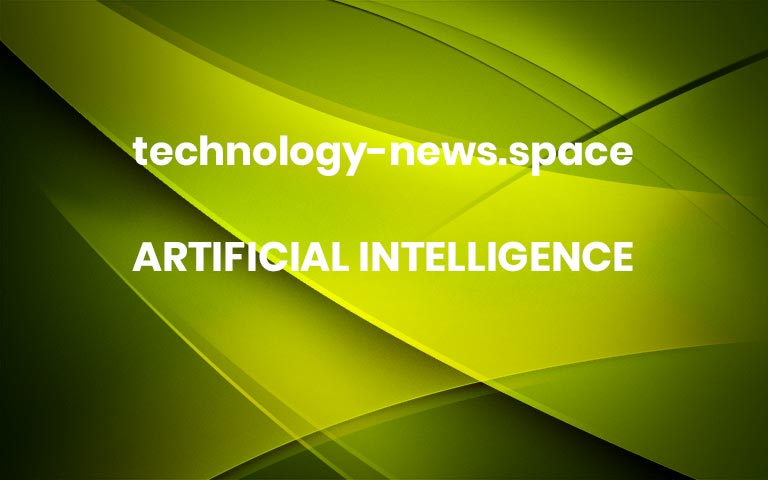MIT forum examines the rise of automation in the workplace
“Pop culture does a great job of scaring us that AI will take over the world,” said Professor Daniela Rus, speaking at a virtual MIT event on Wednesday. But realistically, said Rus, who directs the MIT Computer Science and Artificial Intelligence Laboratory (CSAIL), robots aren’t going to steal everyone’s jobs overnight — they’re not yet good enough at tasks requiring high dexterity or generalized processing of different kinds of information.
Still, automation has crept into some workplaces in recent years, a trend that’s likely to continue. Throughout the daylong conference, the “AI and the Work of the Future Congress,” which convened speakers from academia, industry, and government, one key theme consistently emerged: Task automation shouldn’t be viewed as a replacement for human work, but a partner for it. With the exception of some middle-skilled manufacturing jobs, automation has generally improved human productivity, not eliminated the need for it. If people thoughtfully guide the development and deployment of new workplace technologies, the speakers agreed, we could see improvements in both productivity and well-being.
The daylong event was organized by MIT’s Task Force on the Work of the Future, which released its final report this week, along with the Initiative on the Digital Economy and CSAIL. During the forum, task force participants and other science and industry leaders discussed both the [social] and technological dimensions of these changes.
Narrow AI
Rus emphasized that current industrial applications of artificial intelligence are relatively narrow. “What today’s AI systems can do is specialized intelligence, or the ability to solve a very fixed, limited number of problems,” she said. In select industries like insurance and health care, artificial intelligence has been used to boost efficiency for individual tasks, but it hasn’t generally displaced human workers. Fully automated systems, like driverless cars, remain decades in the future.
While the rise of artificial intelligence in industry remains gradual, multiple speakers noted how other technologies have rocketed to widespread adoption due to the Covid-19 pandemic. Microsoft CEO Satya Nadella described how videoconferencing and related technologies have enabled the transmission of potentially lifesaving information. “The expert can be remote, but can perhaps more seamlessly transfer their knowledge to the person on the front line,” he said.
Nadella added that, since so many companies have grown used to videoconferencing, they may never return to 100 percent face-to-face interactions. “There’s going to be real, structural change,” he said. “People are going to question what really requires presence that is physical, versus telepresence. And I think the workflow will adjust.” He noted that workplaces would have to be more intentional about fostering social cohesion among workers in lieu of casual in-person conversations.
Pandemic aside, some speakers pointed out that automation’s impact on work, though generally positive, has been unequal. Some middle-skill manufacturing jobs have been lost due to automation. But those losses aren’t inevitable — they can be avoided through careful deployment of automation, said Bosch CEO Volkmar Denner. “You could go a very aggressive path and say ‘the robot finally could replace human workers,’” said Denner. “The path we chose was completely different.” Robots on Bosch’s manufacturing line are designed not to oust humans, but to make them even more valuable by assisting with particular tasks to make them more efficient overall.
“We can find a balance between the economic aspects — introducing automation — and also the social aspects — keeping workers in work,” he said. “Technology always should serve human beings and not vice versa.”
Other industry leaders agreed. Jeanne Magoulick, engineering manager for Ford Motor Company, said her team is developing artificial intelligence for predictive maintenance of machinery. “It’s going to notify us when a machine seems to be trending out of control, and then we can schedule that for maintenance during the next available window,” she said. “It’s going to make us more efficient.”
“It’s a choice”
Rus also discussed the use of machines as guardian systems — safeguards that help ensure human workers are performing at their best. She cited a study where radiologists and an artificial intelligence algorithm were separately shown images of lymph node cells and tasked with determining whether they were cancerous or not. The humans’ error rate was 7.5 percent, and the computer’s was 3.5 percent. However, when an image was scanned by both a human and a computer, the resulting error rate was just 0.5 percent, “which is extraordinary,” said Rus.
Julie Shah, MIT associate professor in the Department of Aeronautics and Astronautics, added that this sort of “guardian” relationship between humans and automation could extend to many domains, including self-driving cars and manufacturing systems.
Nadella envisioned that one day the very tools of automation — the ability to design and program computers and robots — will become accessible to those without specialized training. He pointed to examples, like word processing and spreadsheet programs like Excel, where automation turbocharged productivity without requiring users to learn computer code.
“Knowledge work got fundamentally transformed,” said Nadella. In the future, “this notion of a citizen-app developer, a citizen-data scientist — I think it’s real.”
Denner also cautioned, however, that certain tasks — like valuing human lives in an automated driving scenario — are best left to ethicists and society as a whole, not to industrial programmers.
In an afternoon panel about shaping workplace technologies in the future, MIT professor of economics Daron Acemoglu reiterated the refrain that technology isn’t an inevitable force — it’s shaped by humans. Ultimately, he said policymakers and managers will decide how automation fits into the workplace. “There isn’t an ironclad rule of what it is that humans can do and technologies cannot do. They are both fluid. It depends on what we value and how we use technology,” Acemoglu said. “It’s a choice.” More


